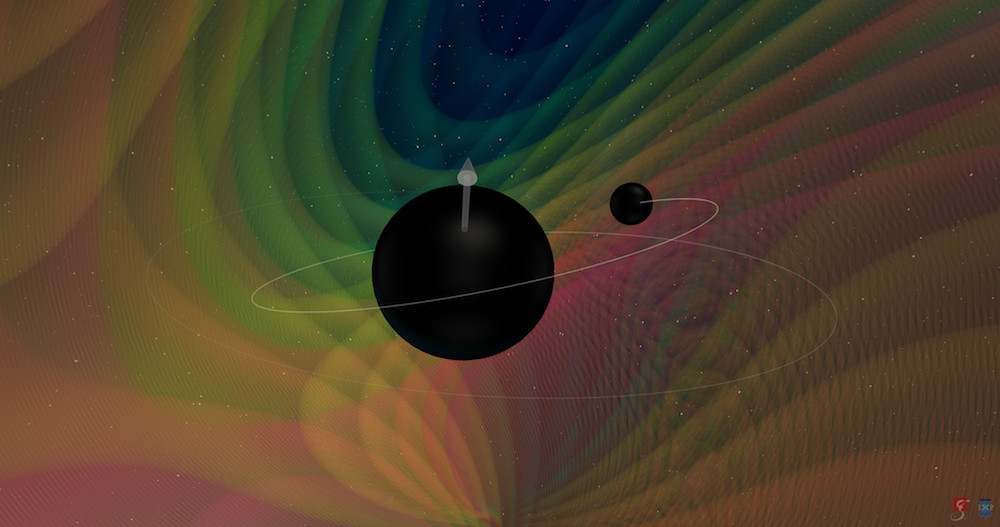
 Credit: N. Fischer, H. Pfeiffer, A. Buonanno (Max Planck Institute for Gravitational Physics), Simulating eXtreme Spacetimes project
Credit: N. Fischer, H. Pfeiffer, A. Buonanno (Max Planck Institute for Gravitational Physics), Simulating eXtreme Spacetimes project
Big Fish Eat Little Fish
Thanks to herculean efforts of physicists and engineers over the past 5 decades, measuring the quivering of spacetime due to the mergers of black holes has become, if not exactly routine, at least not entirely unusual. We are now in an era where we can catalog various types of compact object mergers and examine how the different types are distributed, to gain understanding of the properties of black holes and other collapsed objects in our Universe. A recent interesting example is the gravitational wave event which occurred on April 12, 2019. This event, seen by the National Science Foundation's LIGO Hanford and LIGO Livingston gravitational wave observatories, and by the European Virgo observatory, was one of the most unusual black hole mergers detected so far. All detections of black hole mergers prior to this one involved two black holes of nearly equal masses. But detailed analysis of the April 12 2019 event revealed that this merger involved black holes of very different masses, one about 30 times the mass of the Sun, and a "small" one of 8 solar masses. The image above is an illustration of the size of the event horizons of the two black holes, superimposed on the predicted distortions of spacetime produced by the merger. A mass of 30 solar masses is fairly typical of the black holes seen in earlier mergers, but the 8 solar mass black hole is the smallest yet detected in a merger. Interestingly, black holes detected from their highly variable X-ray emission seem to have similar "small" masses. Perhaps these smaller black holes have not yet eaten enough to grow into their more massive cousins? This merger also verified predictions of Einstein's theory of general relativity. Because of the novel corona virus pandemic, LIGO's current observing run, which began on April 1 2019, was unfortuantely suspended on March 27, 2020. In the meantime, you can help the search for gravitational waves by becoming a gravity spy.
Published: April 27, 2020
<
HEA Dictionary ● Archive
● Search HEAPOW
● Other Languages
● HEAPOW on Facebook
● Download all Images
● Education ● HEAD
>

Each week the HEASARC
brings you new, exciting and beautiful images from X-ray and Gamma ray
astronomy. Check back each week and be sure to check out the HEAPOW archive!
Page Author: Dr. Michael F. Corcoran
Last modified Monday, 26-Feb-2024 17:21:30 EST


